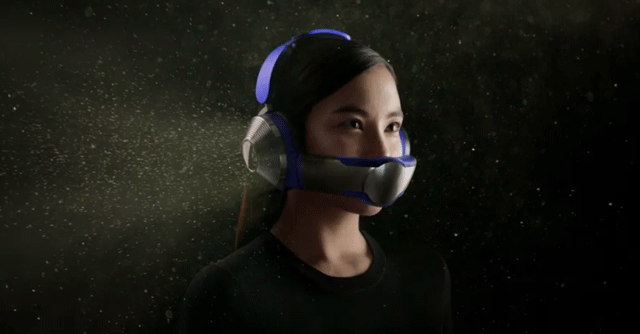
Dyson Zone air purifying ANC headphones unveiled: Here’s how it works


Dyson has managed to fit in a miniaturised air purifier within the body of a pair of headphones, and showcased it as a personal air purifier for the new generation. Called the Dyson Zone, the wearable air purifier also doubles up as an active noise cancelling pair of headphones, and comes with a visor attached to the headphones that are suspended in front of a person’s face.
Dyson says that they have taken six years and over 500 prototypes to come to the final shape and form of the Zone air purifying headphones. Compressors in both earcups help draw in the air around the person wearing the headphones. This air is then passed through two layers of negatively charged electrostatic filters, and the purifier air is passed on to the above mentioned visor.
The visor in question does not make contact with a person’s face, but is instead suspended right in front of them. Through this channel, streams of purified air would be projected for a person to breathe. In effect, the Dyson Zone looks somewhat like a bulky pair of headphones, with a mask in between. Dyson will also have configurations of the Zone with a proper face mask set-up of the visor, according to reports.

As for the audio part, Dyson says that its headphones will offer active noise cancellation, in three modes. The first mode will deploy ANC when the visor is up and active. Pulling down the visor activates the second mode, or conversation mode, where audio pass-through is activated on the headphones. The third mode involves a take on transparency mode, where specific noises from the surroundings are allowed through, to ensure that the user remains aware of their surroundings.
Dyson claims that the audio performance will include “wide frequency response, precise left-right balance, and distortion significantly below what can be detected by the human ear.”
The Zone has only been unveiled for now, and commercial availability will be announced around the world in “Autumn 2022”. The product will come to India as well in the coming months, but as of now, there’s no definite timeline for it.

